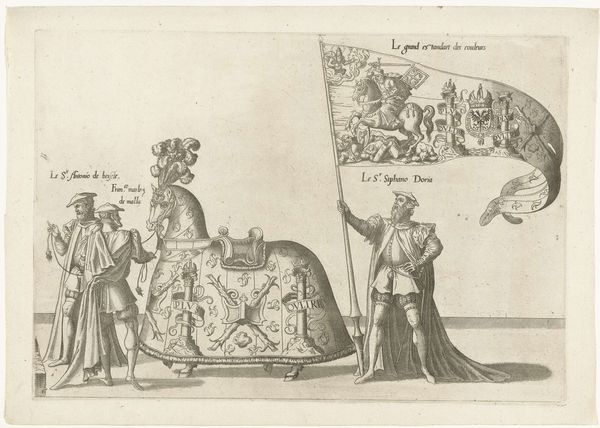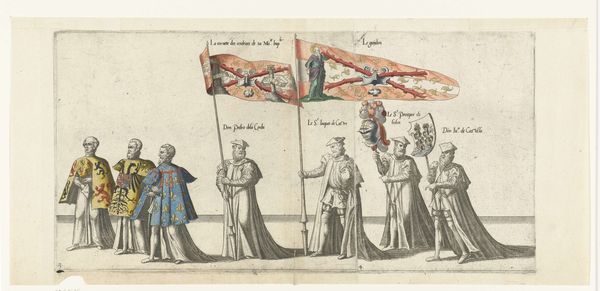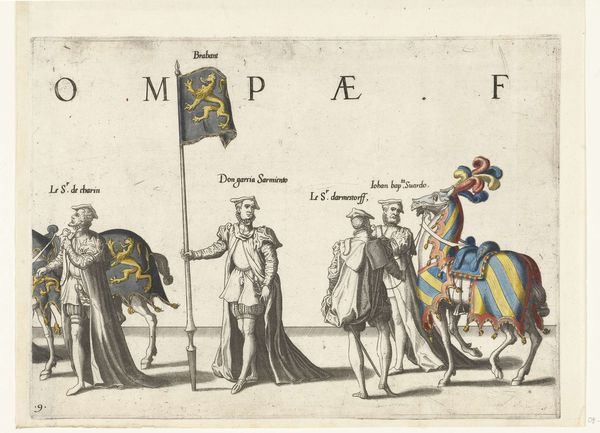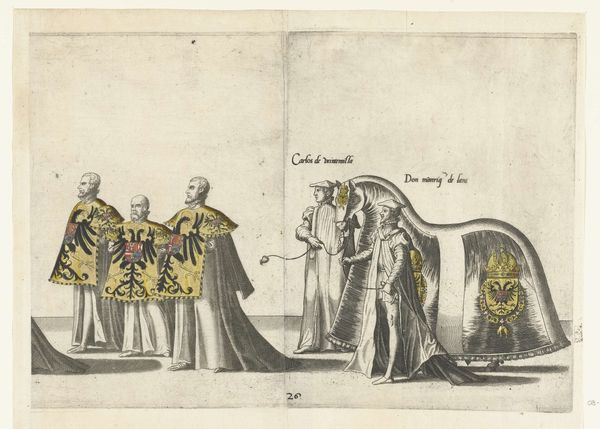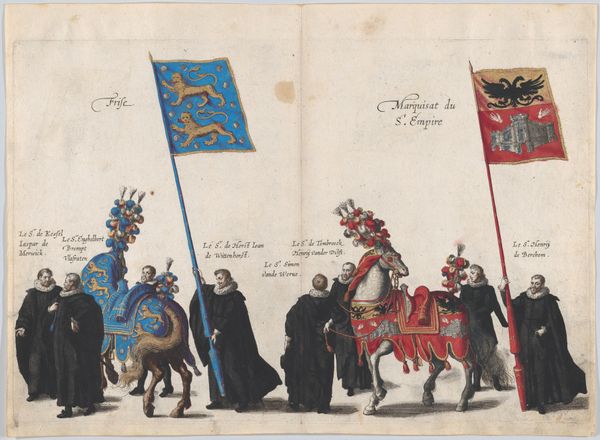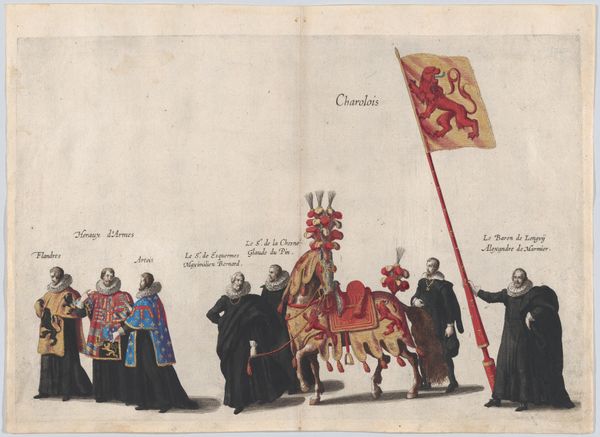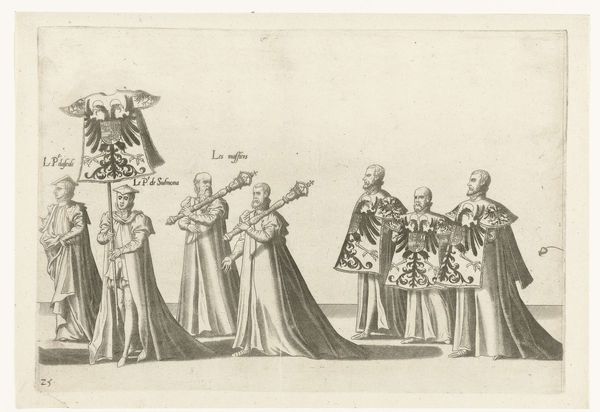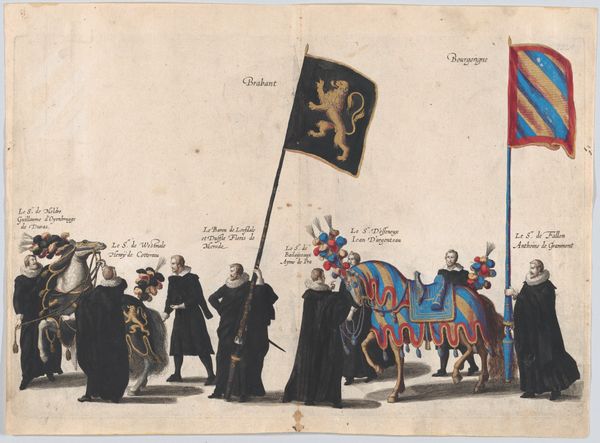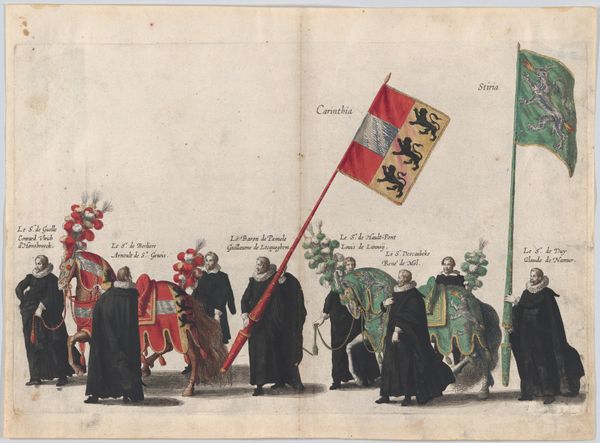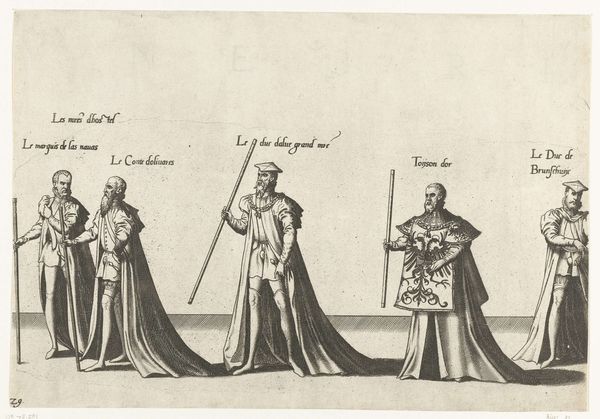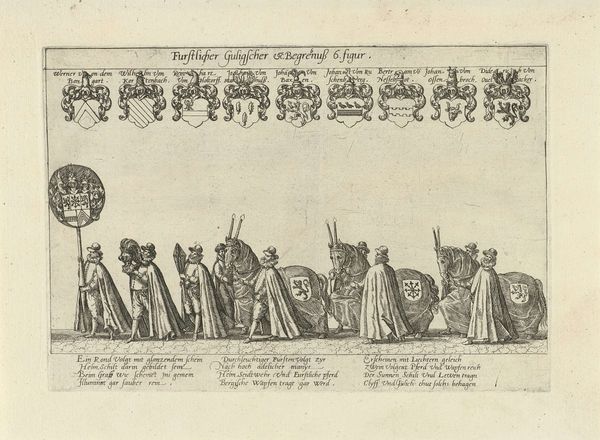
drawing, print, etching, ink, engraving
#
drawing
#
narrative-art
# print
#
etching
#
figuration
#
11_renaissance
#
ink
#
coloured pencil
#
sketchbook drawing
#
history-painting
#
northern-renaissance
#
engraving
#
watercolor
Dimensions: height 242 mm, width 347 mm
Copyright: Rijks Museum: Open Domain
This print, "Part of the Procession, No. 6," was made by Joannes van Doetechum in the late 16th century. Doetechum used an engraving technique, cutting lines into a metal plate, inking it, and pressing it onto paper. He then added color by hand, a labor-intensive process. The choice of printmaking as a medium is significant here. It allowed for the relatively quick reproduction of images, making them accessible to a wider audience. This was crucial during a time of political and religious upheaval, when the spread of information was paramount. The scene depicts a ceremonial procession with lavishly decorated horses and a flag bearer. The intricate details of the costumes and heraldry suggest a celebration of power and status. But, let’s consider the labor that went into creating this image. Doetechum's craftsmanship, combined with the print's potential for mass distribution, speaks to the complex relationship between art, labor, and social power in the early modern period.
Comments
No comments
Be the first to comment and join the conversation on the ultimate creative platform.
